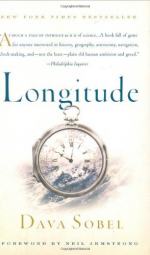
|
| Name: _________________________ | Period: ___________________ |
This test consists of 5 multiple choice questions, 5 short answer questions, and 10 short essay questions.
Multiple Choice Questions
1. When did Harrison learn of the Longitude Prize?
(a) 1712.
(b) 1735.
(c) 1727.
(d) 1700.
2. What was one benefit of the Whiston-Ditton proposal?
(a) It led to glory for England for being the first to solve the problem of longitude.
(b) It was a reliable method of determining longitude.
(c) Whiston and Ditton each became rich off of their proposal.
(d) It led to the monetary award for a solution to the longitude problem.
3. What did the Longitude Act of 1714 establish?
(a) Taxes on the use of maps with longitude.
(b) A monetary prize for solving the problem of longitude.
(c) The lunar method as the government's way to calculate longitude.
(d) A uniform way to calculate longitude.
4. What was the punishment for mutiny on the Association?
(a) Decapitation.
(b) Hanging.
(c) Water boarding.
(d) Thrown overboard.
5. What does the coiled balance spring do in clocks?
(a) Prevents waves from destabilizing the clock.
(b) Allows the clock to keep a constant temperature.
(c) Prevents the pendulum from losing time.
(d) Allows the navigator to know the time in the home port.
Short Answer Questions
1. What is the main difference in measuring longitude and latitude?
2. What toy does the narrator play with at the beginning of Chapter 1: Imaginary Lines?
3. Before using clocks to navigate longitude, sailors used the __________.
4. What did Harrison build that still function today?
5. What did King Louis XIV of France complain about with more accurate measures of longitude?
Short Essay Questions
1. Describe John Harrison's family.
2. What were the problems with William Whiston's proposal for determining longitude?
3. What were the economic consequences of not knowing longitude?
4. What was the problem with measuring the speed of light? How was it solved?
5. Why was it unusual that John Harrison became an accomplished clockmaker?
6. Why did changes in temperature affect early clocks?
7. What was Humphrey Ditton's suggestion for determining longitude?
8. What did Huygens patent in 1675.
9. Describe the legend of how Galileo came up with the idea of the pendulum clock.
10. What did the Longitude Act establish?
|
This section contains 835 words (approx. 3 pages at 300 words per page) |

|




